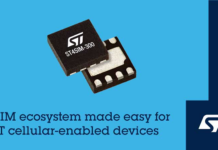
The Internet of Things finds huge promise in the industrial environment, creating a new wing of IoT called the Industrial Internet of Things, or IIoT. This is characterized by a shift in the delivery model and mindset, from a product-based to an outcome-based services approach. Industrial automation is an intrinsic part of this process, acting as an input in the overall digital ecosystem. Various companies today are at different stages of automation and require different strategies to make the most of the IIoT. The bare basics of such strategies involve recognizing and overcoming the initial teething problems.
A jump to IIoT demands not only a technical grounding, but also a big picture view that encompasses operations, business strategy, people agenda, and other elements of business. Because of this, organizations are frequently caught up in the conundrum of what to focus on to make IIoT a success. Operational aspects such as manufacturing, supply chain, etc. are basic agenda, which need to be topped up with the right IT and technological capabilities to intelligently automate the mundane processes.
Operations and IT have traditionally been distinct in their nature—operations being more proprietary and IT being more cutting-edge. Also, IT has been more top-down in nature, whereas operations require a more bottom-up approach starting with individual equipment and then thinking aggregation. Yet, both these cogs in the wheel must converge at a single point—the point of reliance on industrial data. It is this industrial data that is the foundation of IIoT, and the element that companies must base their future strategy on.
Making IIoT or industrial automation a success requires an innovative mindset and the merging together of the operations and technology skills. Companies must strive to overcome the following teething problems:
1. Integration challenges for software and hardware: Software selection, compatibility, complexity of use, training requirement, and the like prevent organizations from making the most of IIoT. It is important that the human-machine-interfaces (HMIs) bridge the gap that proprietary legacy systems and applications pose. You must choose a software solution that is grounded in the latest IT and tech trends and is standardized. Open solutions are a great way to enable connectivity—a must for IIoT.
2. Integration of data: Data from various industrial equipments must be collected, sorted and organized, and integrated to be able to make sense of it and derive useful insights. The best way is to leverage a system that connects and controls data ERP systems, often with an open IT system such as an SQL database.
3. Moving over legacy systems: Legacy systems are often looked upon as reliable, cost-effective, and in control, whereas for successful IIoT, it is critical to connect these systems to the modern enterprise management systems. The choice of HMI system is a critical decision to enable compatibility of systems and the right level of automation, thanks to data maturity.
4. Not paying attention to security: The wide range of components being used in IIoT, such as sensors, routers, factory machines etc., makes the IIoT network quite vulnerable. This is also because of the disparate data points, posing a data security challenge. While traditional operations systems used minimum connectivity with each other to carry out tasks, the modern slew of industrial equipment thrives on being connected with each other, through the Internet. Companies must pay special attention to installing the best security mechanisms to minimize cyber threats.
5. Lack of standardization: The industrial space is not known for being standardized in its practices. For example, different devices use different protocols for sharing data. This hampers the free and safe flow of data—a must for IIoT. IIoT customers today are looking for end-to-end solutions which are standardized based on best practices and yet interconnected and interoperable. Standard communication problems are also a critical input for IIoT success.
Paying attention to these basic factors at the outset will make the IIoT journey a relatively smooth one.
By: Rhucha Kulkarni
Source: readitquik.com


















